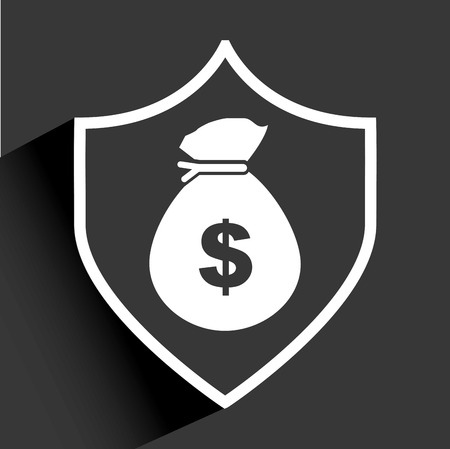1. Understanding Social Security for Early Retirees
If youre pursuing FIRE (Financial Independence, Retire Early) in the U.S., understanding how Social Security fits into your long-term plan is essential. While Social Security benefits are a cornerstone of retirement security for many Americans, early retirees face unique challenges and opportunities. The earliest age you can claim Social Security is 62, but claiming before your Full Retirement Age (FRA)—which ranges from 66 to 67 depending on your birth year—means reduced monthly benefits for life. For FIRE individuals who may stop working well before 62, its crucial to understand that your benefit calculation is based on your highest 35 years of earnings. Fewer working years could lower your average, potentially reducing your future payout. Some strategies to maximize benefits include: continuing part-time work to fill out lower-earning years, delaying claims as long as possible to increase monthly payments, and coordinating with a spouses benefits if married. Ultimately, building flexibility into your FIRE plan—by factoring in both the timing and amount of expected Social Security—is key to long-term financial resilience.
2. Pensions and Employer Retirement Plans
When planning for FIRE (Financial Independence, Retire Early) in the U.S., understanding how pensions and employer retirement plans work is crucial. These systems have evolved, and knowing their strengths and limitations can shape your game plan. Let’s break down the traditional pension, 401(k), and other employer-sponsored options, so you can make informed decisions about integrating them into your path to financial independence.
Traditional Pensions: Fading but Still Valuable
Traditional defined benefit pensions—where you receive a set monthly payout after a certain age or years of service—are increasingly rare outside of government jobs or legacy corporations. If you’re among the lucky few with access to one, it can provide reliable, inflation-adjusted income for life. However, most Americans today rely on other employer-sponsored plans.
The Rise of 401(k)s and Defined Contribution Plans
The 401(k) is now the backbone of American retirement savings. In this plan, you contribute pre-tax dollars (or post-tax with a Roth 401(k)), and many employers match some portion of your contributions. Your final nest egg depends on market performance and your own saving habits. Here’s a quick comparison:
| Feature | Pension (Defined Benefit) | 401(k) (Defined Contribution) |
|---|---|---|
| Who Contributes? | Mainly Employer | You & Employer Match |
| Payout Type | Guaranteed Monthly Income | Lump Sum or Withdrawals |
| Investment Control | None (managed by fund) | You choose investments |
| Portability | Low—tied to company/years served | High—can roll over when changing jobs |
| Risk Bearer | Employer bears risk | You bear risk |
Fitting Employer Plans Into Your FIRE Strategy
If your goal is early retirement, maxing out your 401(k) is key—especially if your employer offers a match (that’s free money!). While you can’t access these funds penalty-free until age 59½ (with some exceptions), strategies like the “Rule of 55” or Substantially Equal Periodic Payments (SEPP/72(t)) can allow earlier withdrawals if needed. Consider supplementing your employer plan with IRAs or taxable brokerage accounts for greater flexibility before traditional retirement age.

3. Government and Community Safety Nets
For FIRE (Financial Independence, Retire Early) individuals, understanding the available government and community safety nets is crucial for creating a resilient financial plan. While many in the FIRE community aim to minimize reliance on public assistance, unexpected life events or market downturns can make these programs a valuable backup. Let’s review some key federal and local safety net programs that might come into play, even for those who have achieved early retirement.
Medicaid: Healthcare Support When Needed Most
Healthcare costs are one of the biggest concerns for early retirees, especially before Medicare eligibility at age 65. Medicaid provides health coverage for low-income individuals, and in states with expanded Medicaid, income thresholds may allow FIRE adherents with low taxable income to qualify. Eligibility is based on Modified Adjusted Gross Income (MAGI), which means careful tax planning—like living off investments with favorable tax treatment—can help you fit within required limits. It’s essential to check your state’s specific rules, as programs and thresholds vary widely.
SNAP and Food Assistance Programs
The Supplemental Nutrition Assistance Program (SNAP), formerly known as food stamps, helps eligible individuals and families cover grocery costs. While many FIRE followers may not envision needing SNAP, job loss or unexpected expenses could shift your financial situation. Local food banks and community organizations also offer support without strict eligibility criteria. Even if you never intend to use these resources, being aware of them provides peace of mind during economic uncertainty.
Subsidies: Affordable Care Act (ACA) and Beyond
Under the ACA, early retirees can access significant subsidies for health insurance purchased through the marketplace. These subsidies are calculated based on household income relative to the federal poverty level (FPL). With strategic withdrawal strategies, many FIRE individuals can keep their reported income low enough to qualify for reduced premiums—sometimes even as low as a few dollars per month. Additionally, local governments sometimes offer utility or housing assistance for residents experiencing hardship; it’s wise to explore what’s available in your area.
What FIRE Individuals Should Know
Pursuing FIRE means taking responsibility for your own financial security, but it doesn’t mean going it alone in a crisis. Understanding how income-driven safety nets work allows you to structure withdrawals and spending in ways that preserve eligibility if needed. Stay up-to-date on program requirements, as policy changes can impact both access and benefits. Lastly, don’t overlook community-based resources—local nonprofits and charities often provide targeted support that complements federal programs.
4. Health Insurance Options Before Medicare
One of the biggest challenges for FIRE (Financial Independence, Retire Early) individuals in the U.S. is bridging the health insurance gap between early retirement and Medicare eligibility at age 65. Without employer-sponsored coverage, securing affordable and comprehensive health insurance becomes a top priority during these years. Here’s a breakdown of the most common options available and strategies to help manage this crucial aspect of your financial independence journey.
ACA Marketplace Plans
The Affordable Care Act (ACA) offers a marketplace for health insurance that is accessible regardless of pre-existing conditions. Premiums are income-based, so with careful tax planning—such as drawing down taxable assets strategically—many FIRE retirees can qualify for significant subsidies, lowering their out-of-pocket costs substantially.
COBRA Coverage
If you’re leaving a job with health benefits, COBRA allows you to temporarily continue your employer’s group health plan for up to 18 months (sometimes longer in special cases). While convenient, COBRA tends to be expensive since youll pay the full premium plus an administrative fee, but it can be a critical bridge option if you have ongoing medical needs or want to maintain current providers.
Alternative Strategies
| Option | Key Benefits | Considerations |
|---|---|---|
| Health Care Sharing Ministries | Lower monthly costs; faith-based community support | Not regulated as insurance; limited on pre-existing conditions and some services |
| Short-Term Health Plans | Low premiums; flexible duration | Limited coverage; may not cover essential benefits or pre-existing conditions |
| Part-Time Work With Benefits | Maintain insurance through employment; social engagement | May delay full retirement; eligibility varies by employer |
| Spouse’s Employer Plan | Group rates; often broader coverage network | Your spouse must be employed and eligible for family coverage |
Strategic Planning Tips for FIRE Health Coverage Gap
Pursuing early retirement means thinking creatively about healthcare. Many FIRE individuals combine ACA plans with Health Savings Accounts (HSAs) while being mindful of taxable income to maximize subsidies. Some choose geographic arbitrage, relocating to states with better ACA options or lower healthcare costs. Others stagger withdrawals from tax-advantaged accounts to stay under subsidy cliffs. The key is regular review: laws and plan options change annually, so reassess your strategy every year until you reach Medicare eligibility.
5. Tax Implications and Withdrawals
Pursuing FIRE (Financial Independence, Retire Early) means you’ll need to master the ins and outs of accessing your retirement savings before the traditional age of 59½—without falling into costly tax traps. Let’s break down key strategies and common pitfalls so you can keep more of your hard-earned money.
Early Withdrawal Penalties: What You Need to Know
The IRS imposes a 10% penalty on early withdrawals from most tax-advantaged retirement accounts, such as 401(k)s and Traditional IRAs, if taken before age 59½. Not only do you face the penalty, but the distribution is also subject to regular income tax, which can be a double whammy for your finances. There are some exceptions—like for qualified education expenses, medical costs above a certain threshold, or a first-time home purchase—but these don’t cover most early retirees’ needs.
Roth IRA Conversion Ladders: A FIRE Favorite
One popular way for FIRE practitioners to access funds early is through a Roth IRA conversion ladder. Here’s how it works: You convert money from a Traditional IRA or 401(k) into a Roth IRA each year. After five years, you can withdraw the converted principal without taxes or penalties. By staggering conversions annually, you create a steady “ladder” of penalty-free withdrawals in your early retirement years. This approach requires careful planning and patience, but it’s a legal workaround that savvy early retirees across America rely on.
Other Ways to Tap Funds Before 59½
In addition to Roth ladders, Substantially Equal Periodic Payments (SEPP), also known as Rule 72(t), allow you to take fixed distributions from IRAs and some employer plans without penalties. However, this method locks you into a strict withdrawal schedule for at least five years or until you turn 59½—whichever is longer. Another option: withdrawing contributions (not earnings) from Roth IRAs at any time, since those funds were already taxed when deposited.
Don’t Get Burned by the IRS: Smart Planning is Key
To avoid surprise tax bills or penalties, always plan withdrawals in advance and consult with a qualified tax advisor familiar with FIRE strategies. Keep meticulous records of your conversions and withdrawals, watch out for state-specific rules (since not every state treats Roth conversions the same), and remember that Social Security and pensions have their own timelines and requirements for access. The bottom line: With careful planning and knowledge of IRS rules, you can build an income bridge that gets you through your pre-59½ years safely—and keeps your FIRE dreams alive.
6. Backup Plans: Planning for the Unexpected
Even the most carefully crafted FIRE (Financial Independence, Retire Early) plans can face roadblocks. When you’re building your future around early retirement, its crucial to prepare for those curveballs life might throw your way. Having robust backup strategies not only protects your finances but also gives you peace of mind as you step away from traditional employment.
Emergency Funds: Your First Line of Defense
Every FIRE advocate knows that a solid emergency fund is non-negotiable. While three to six months worth of living expenses is a common recommendation, early retirees should consider stashing away at least 12-24 months of expenses. This larger cushion accounts for longer periods without income and provides flexibility in economic downturns or personal crises. Keep this fund in a high-yield savings account or money market fund—something liquid and easily accessible.
Disability Insurance: Protecting Your Earning Potential
If youre retiring early but still earning side income or have dependents, disability insurance remains relevant. Even after leaving your main career, unexpected illnesses or injuries can derail your plans or force you to dip into investments prematurely. Long-term disability insurance can replace lost income if you’re unable to work due to health issues. Review any employer-provided policies before you leave your job, and consider purchasing an individual plan if needed.
Health Setbacks and the Need for Flexibility
Healthcare emergencies are one of the top threats to financial independence. Besides having comprehensive health insurance (such as coverage through the ACA Marketplace or COBRA), consider setting up a Health Savings Account (HSA) if eligible. HSAs offer tax advantages and can help cover out-of-pocket medical costs during retirement.
What If Your Plan Falls Short?
No one likes to think about running out of money during retirement, but it’s smart to have contingency plans. Know your Social Security eligibility dates and benefit amounts—delaying benefits can increase monthly payouts if you need them later. Stay informed about options for part-time work, consulting gigs, or gig economy roles if extra income becomes necessary. Staying flexible and open-minded about returning to the workforce, even temporarily, can keep your long-term goals on track.
Regularly Revisit and Adjust Your Safety Nets
The world changes, and so do personal circumstances. Make it a habit to review your backup plans annually: update your emergency fund amount based on lifestyle changes, reassess insurance needs, and refresh your knowledge of available safety nets like Social Security and pensions. Being proactive keeps you resilient against whatever the future may hold on your FIRE journey.


